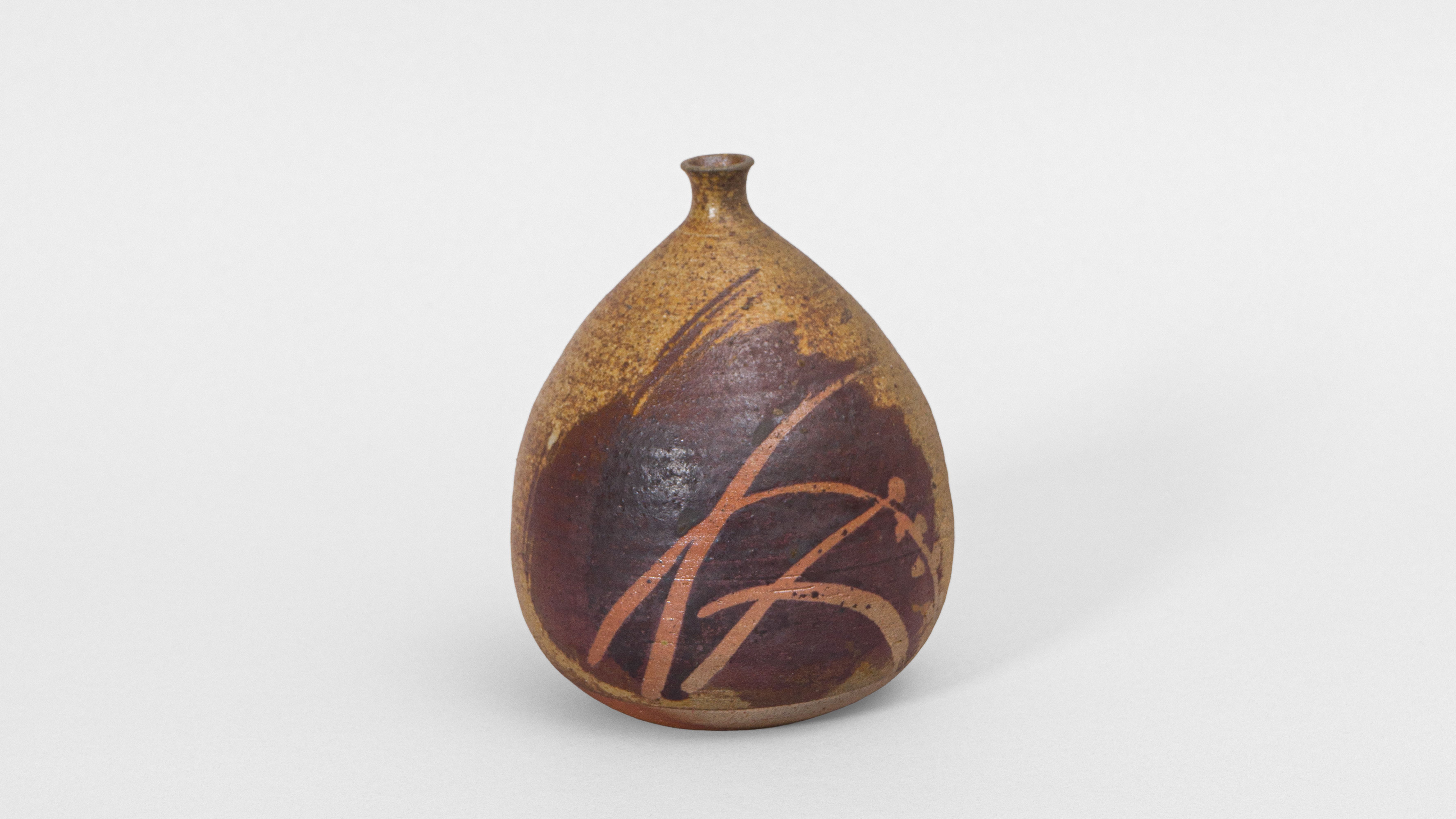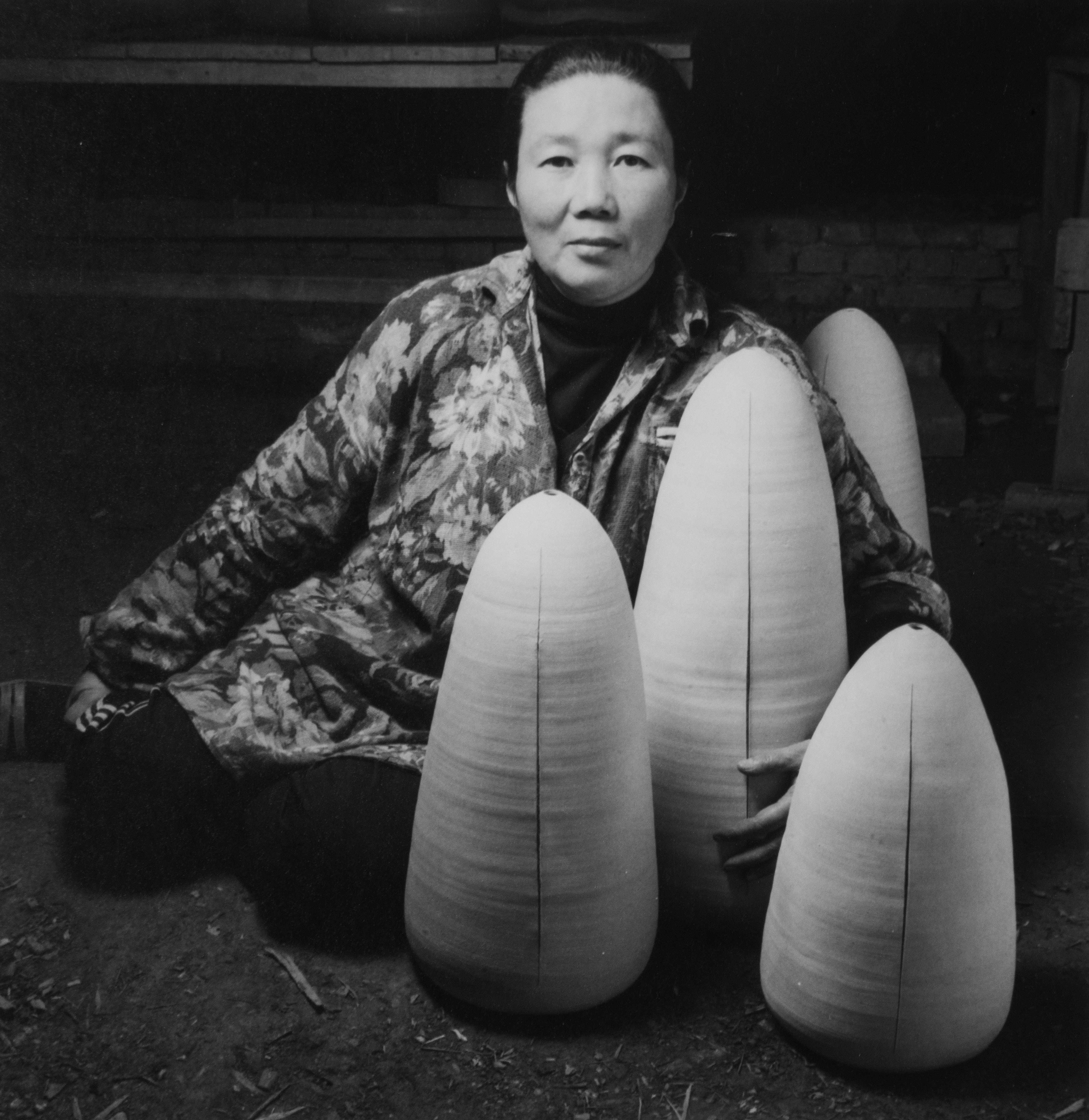
Shoko Suzuki
b. 1929
Born in Shoko Akiko Ōshima in Yokohama, Japan, and Lives and works in Cotia, São Paulo, Brazil
Artwork
Biography

Shoko Suzuki (b. 1929, Tokyo) is a Japanese-born ceramist who built her celebrated career in Brazil. Growing up during World War II, an experience she later said gave her art its purpose, she began visiting pottery studios in the early 1950s. Breaking from a traditional system that rarely accepted women, she secured an apprenticeship with master potter Tōko Karasugi, who trained her for a decade. During this period, she also married painter Yukio Suzuki.
Suzuki began exhibiting her work in Tokyo in 1955, featuring in show at prominent venues such as the Ando Gallery, Mitsukoshi Gallery, the Tokyo National Museum, and the Yoseido Gallery.
In 1962, inspired by a television program about Brazil, the couple sold their possessions and immigrated, settling in Mauá. There, Suzuki worked barefoot on a manual potter’s wheel, experimenting with local clays and ash glazes. They moved to Cotia in 1964, where she built her first climbing kiln (noborigama) from recycled bricks. She introduced her work to the Brazilian public in 1967 with her first “kamabiraki,” a ritual kiln-opening ceremony where new pieces are displayed and sold.
Suzuki’s practice is a poetic fusion of traditional Japanese ceramic art with the tropical Brazilian environment. Using her hand-built kiln, she developed a personal palette of ash glazes and earthy tones. Her vases, jars, and plates feature fluid, organic forms, symbolic etchings, and recurring themes of roots, plants, and landscapes.
A pioneering figure, Suzuki became the first Japan-born ceramist to hold a solo exhibition at São Paulo’s Museum of Art (MASP) in 1975. Major solo exhibitions include the Anchei Gallery in São Paulo (1968), Galeria Bonino in Rio de Janeiro (1976), the Fundação Cultural do Distrito Federal in Brasília (1984), and the Museu da Casa Brasileira in São Paulo (2003), which celebrated her 50-year career.
Her work has also been featured in numerous group exhibitions at institutions including MASP (1988, 1996), the Tokushima Kyodo Museum in Japan (1995), the Instituto Tomie Ohtake (2008), the Pinacoteca de São Paulo (2008), and most recently in the group shows The Sun’s Path at Gomide&Co (2023) and Tocar a Terra at Instituto Tomie Ohtake (2024).
In recognition of her significant contributions to ceramics as an artistic expression, Suzuki was honored by the Japanese government in 2021 with the Order of the Rising Sun, Gold and Silver Rays.